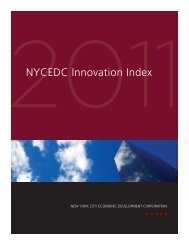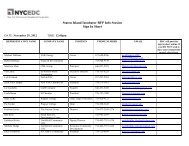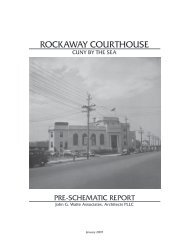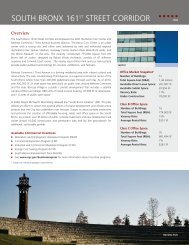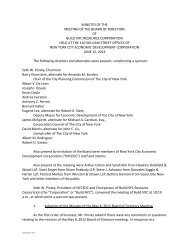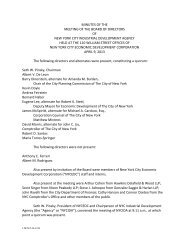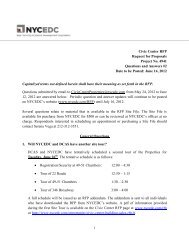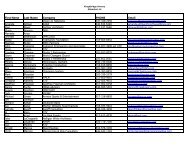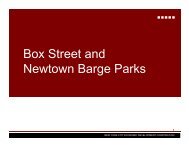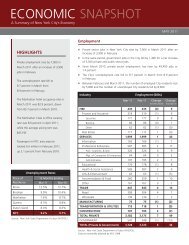No 7 Secaucus Extension Final Report - NYCEDC
No 7 Secaucus Extension Final Report - NYCEDC
No 7 Secaucus Extension Final Report - NYCEDC
You also want an ePaper? Increase the reach of your titles
YUMPU automatically turns print PDFs into web optimized ePapers that Google loves.
<strong>No</strong>. 7 <strong>Secaucus</strong> <strong>Extension</strong>Feasibility Analysis <strong>Final</strong> <strong>Report</strong>4 OPERATIONSService PlanThe <strong>No</strong>. 7 currently operates between Flushing-Main Street in Queens and Times Square-42 Streetin Manhattan. On weekday mornings and evenings, some <strong>No</strong>. 7 trains operate express betweenQueens and Manhattan, stopping at eight of 18 stations in Queens. Currently, 26 trains per hour(TPH) operate during the AM and PM peak hour. With the addition of a CBTC signal system andsubsequent improvements along the <strong>No</strong>. 7, peak service will increase service to 28 TPH, and theproposed <strong>No</strong>. 7 Terminal Station is designed to accommodate up to 30 TPH.During construction at the 34 th Street and 10 th Avenue station, train speeds may be limited andpeak service levels may not be able to be maintained.Travel TimeThe travel time analysis was based on results of the train-operations Rail Traffic Controller (RTC)computer simulation model. The model for this study was developed using the physicalcharacteristics and operating conditions of the <strong>No</strong>. 7 <strong>Extension</strong> from Grand Central to the 11 thAvenue terminal station designed in 2004 and the new track conditions developed as part ofthe <strong>No</strong>. 7 <strong>Secaucus</strong> <strong>Extension</strong>.The specifications of the R142A subway car, including tractive 5 effort curve data and brakingeffort curve data, were used to define the performance characteristics of the train set in themodel. Train spacing for this simulation scenario was based on speed and safe braking distance,and calibrated to emulate the performance of the existing fixed-block signal system. Detailedcontrol-line signal-system characteristics were not included in the model because they were notavailable.The proposed eastbound and westbound travel times between <strong>Secaucus</strong> and Grand Centralare presented in Tables 6 and 7 (measured in minutes:seconds). The runtime between stations isdetermined by the RTC Train Performance Calculator (TPC), which is a simulation program thatrecords travel time of a single train as it travels through a defined system. It does not reflect theimpacts that multiple trains running together through the same system might create; therefore, itis considered a “theoretical” running time.In order to more realistically reflect the travel times in a multiple train operation, network runtimeshave been derived based on actual operating experience. For the purpose of this feasibilitystudy, adjustment factors to reflect network runtimes were obtained by comparing thedifference between TPC and network running times of 10 trains from the <strong>No</strong>. 7 Subway <strong>Extension</strong>-- Hudson Yards Rezoning and Development Program 2004 network simulation study. Theadjustment factors reflect an average running-time increase for those 10 trains that can beattributed to the impact of running multiple trains in a network simulation and are used here toapproximate the results of a network simulation for this additional expansion to <strong>Secaucus</strong>. Basedon this analysis, the eastbound runtimes were increased by 3.92 percent, and the westboundruntimes were increased by 8.33 percent. The “Network Runtime Between Stations” and5 Tractive effort can be defined as the amount of force needed to propel a train set or the power that a subwayconsist is able to exert before the wheels start slipping.41




